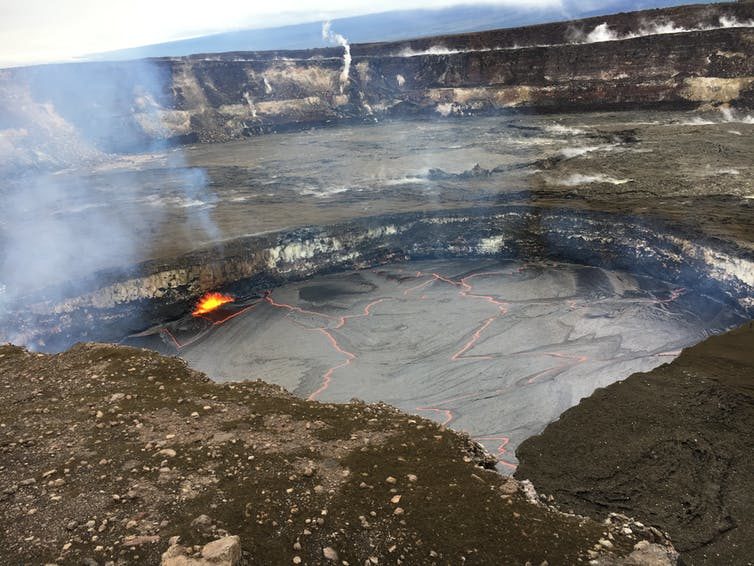
Kilauea, the most active volcano on Hawaii, has been in continual eruption since 1983. It entered a new phase in early May when fractures along a rift on the eastern side of the volcano opened during a series of earthquakes - some of which became volcanic fissures from which lava was erupted.
These fissures allowed magma that had been ponded in a lava summit lake to drain onto the ground surface as lava flows lower down the mountain. This was close to a residential subdivision known as Leilani Estates, where a new volcanic cone has since developed.
Kilauea is buttressed on its north-west side by the enormous mass of Mauna Loa volcano, but its south-east slopes face the ocean and are unsupported. The magma from beneath the volcano usually erupts from the summit of the volcano, and there was a spectacular lava lake there in March. However two rift zones (areas where the volcano is splitting apart), extending east and south-west from the summit, can make it possible for lava to erupt from Kilauea's flanks too.
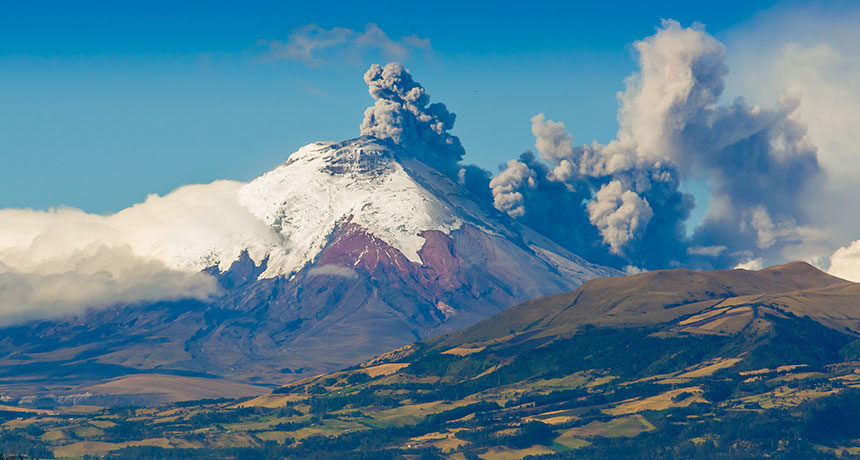
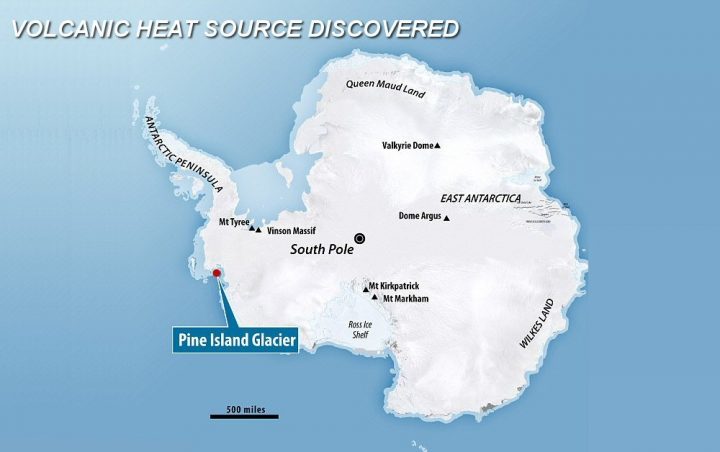
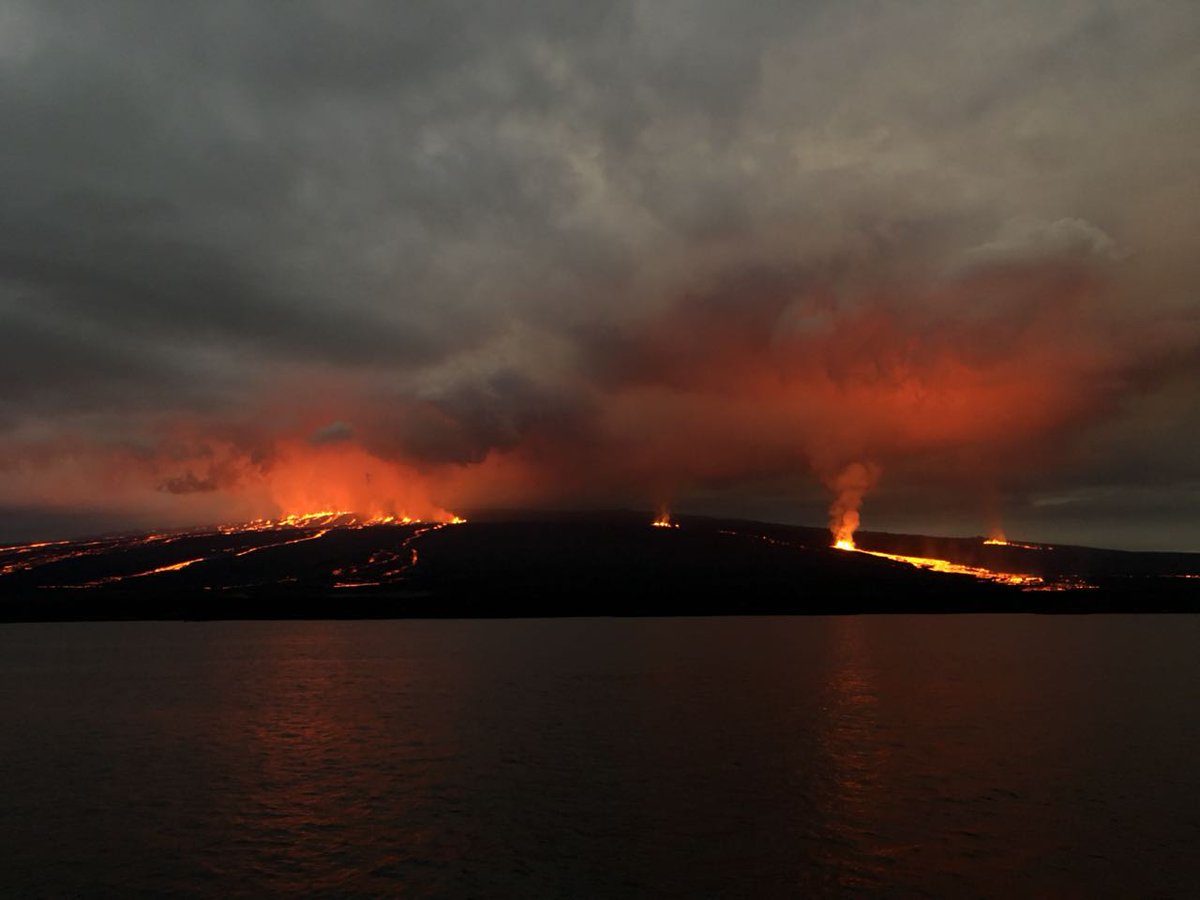

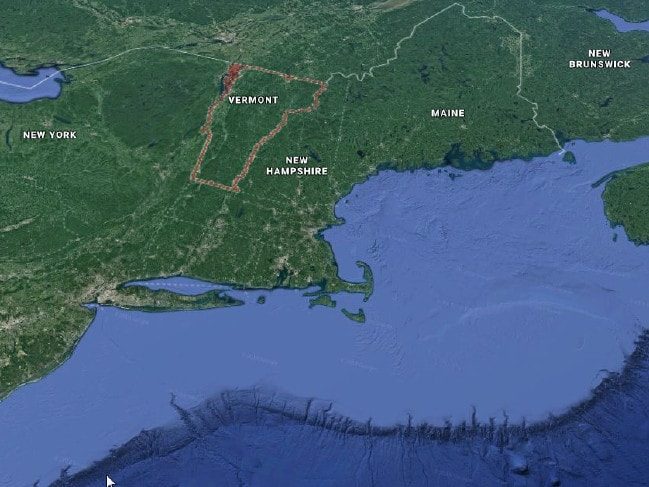
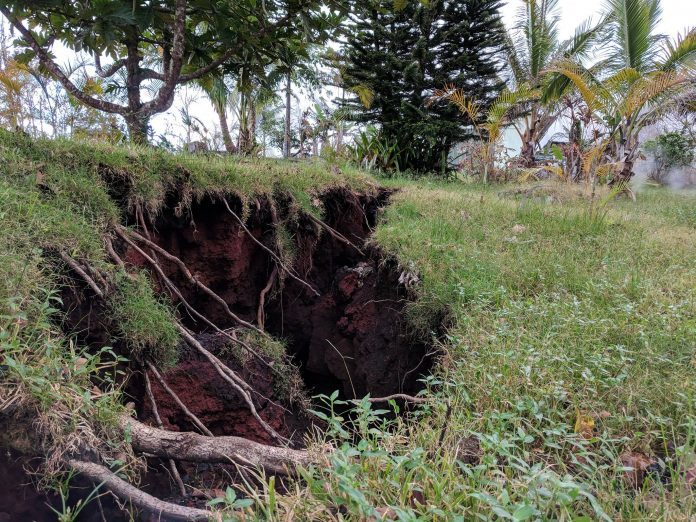
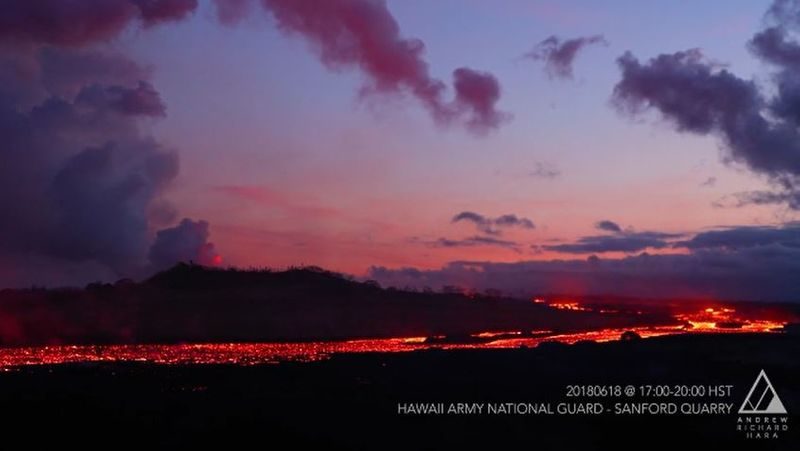
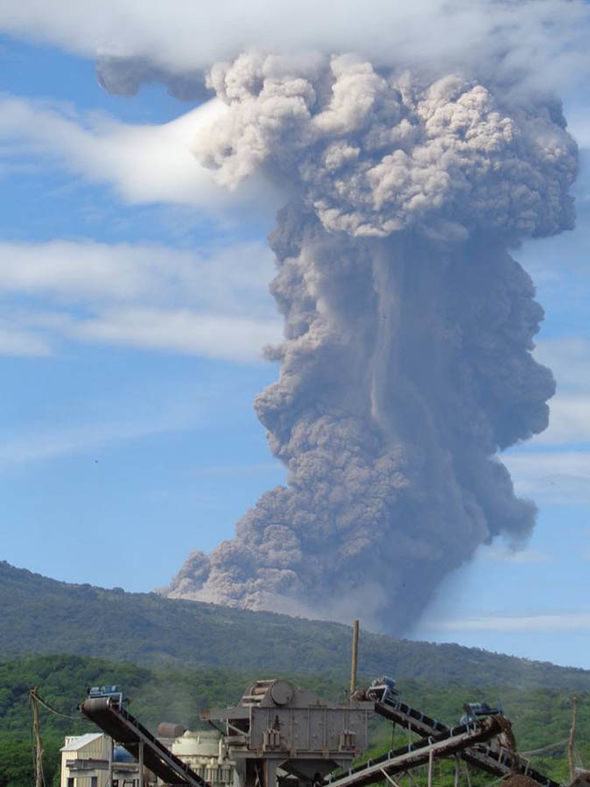
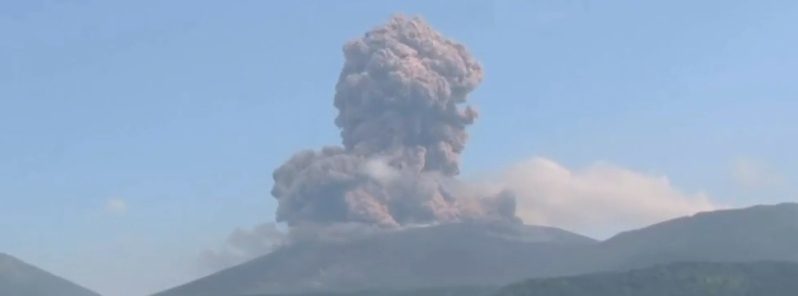



Comment: More on this spectacular and destructive phenomenon: